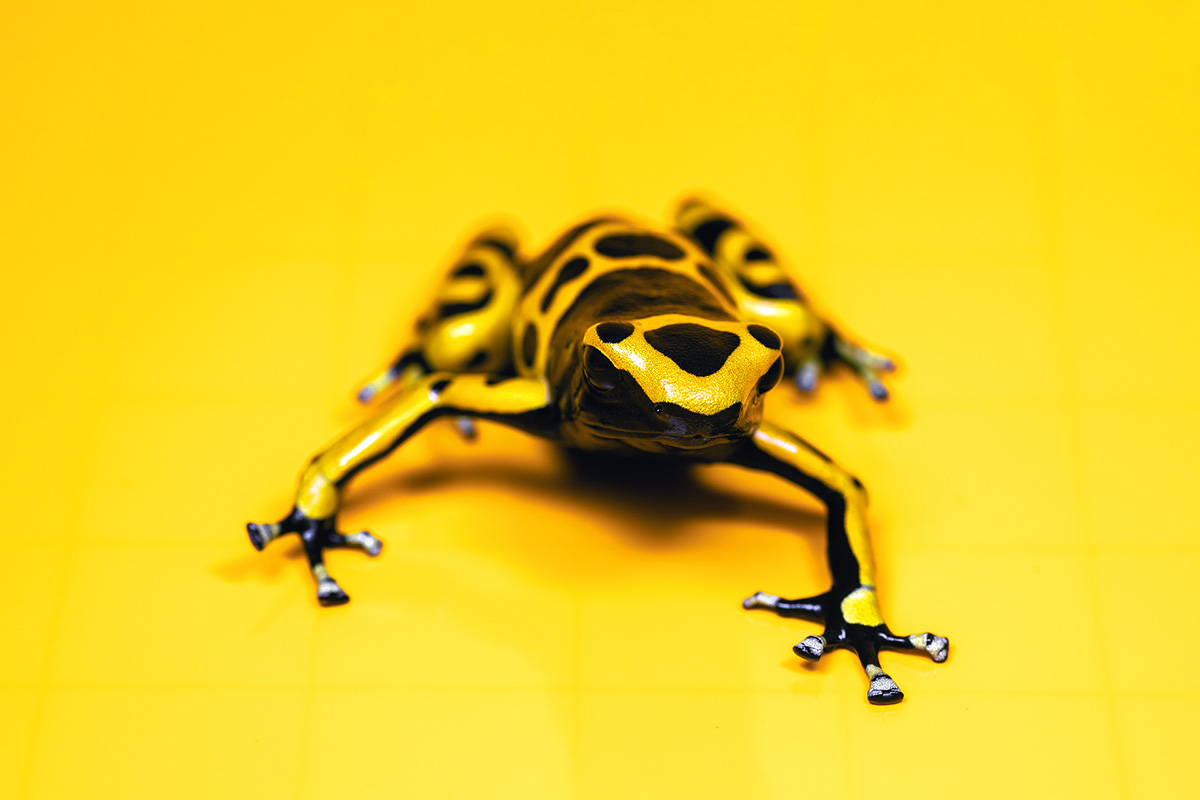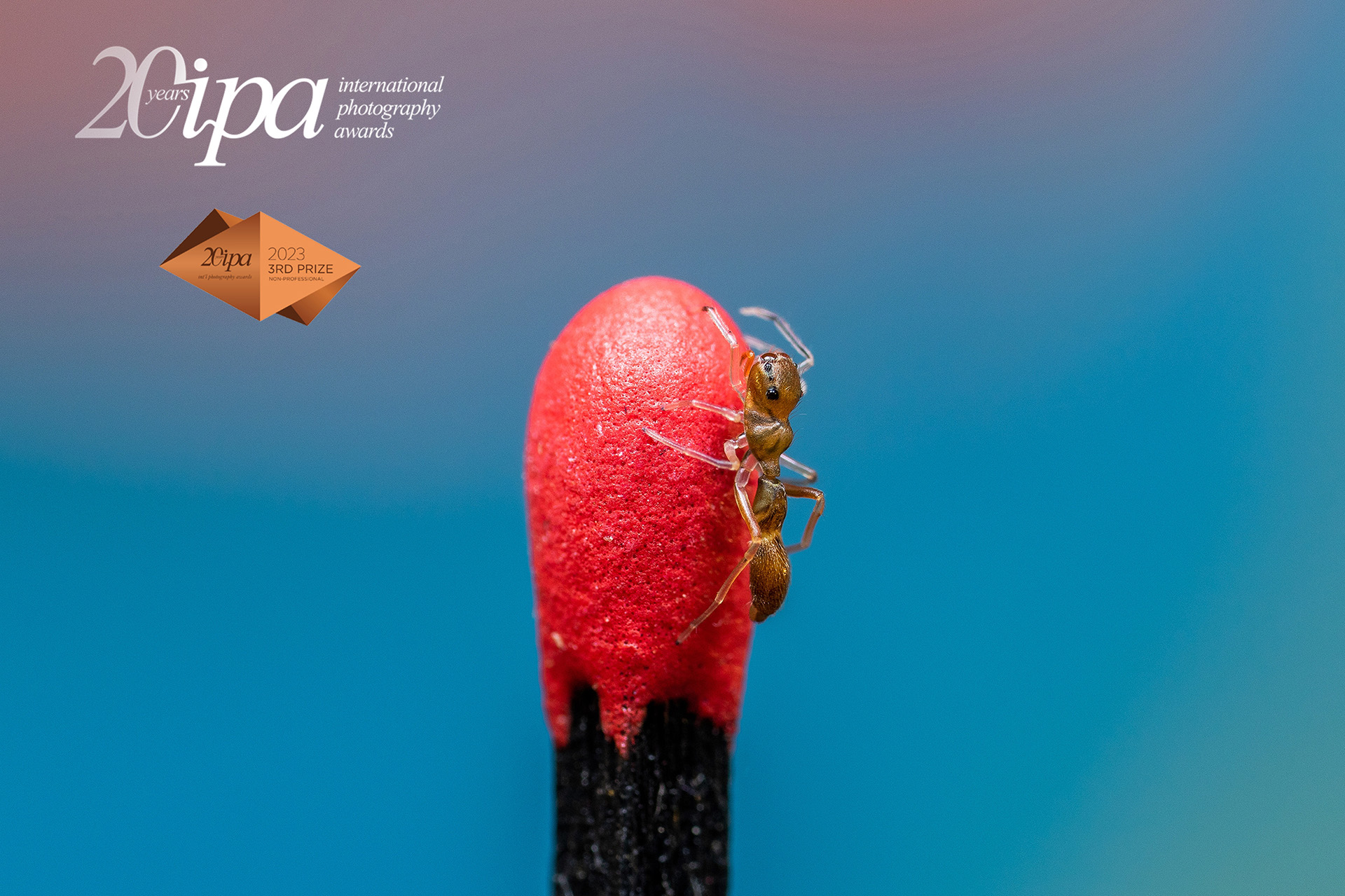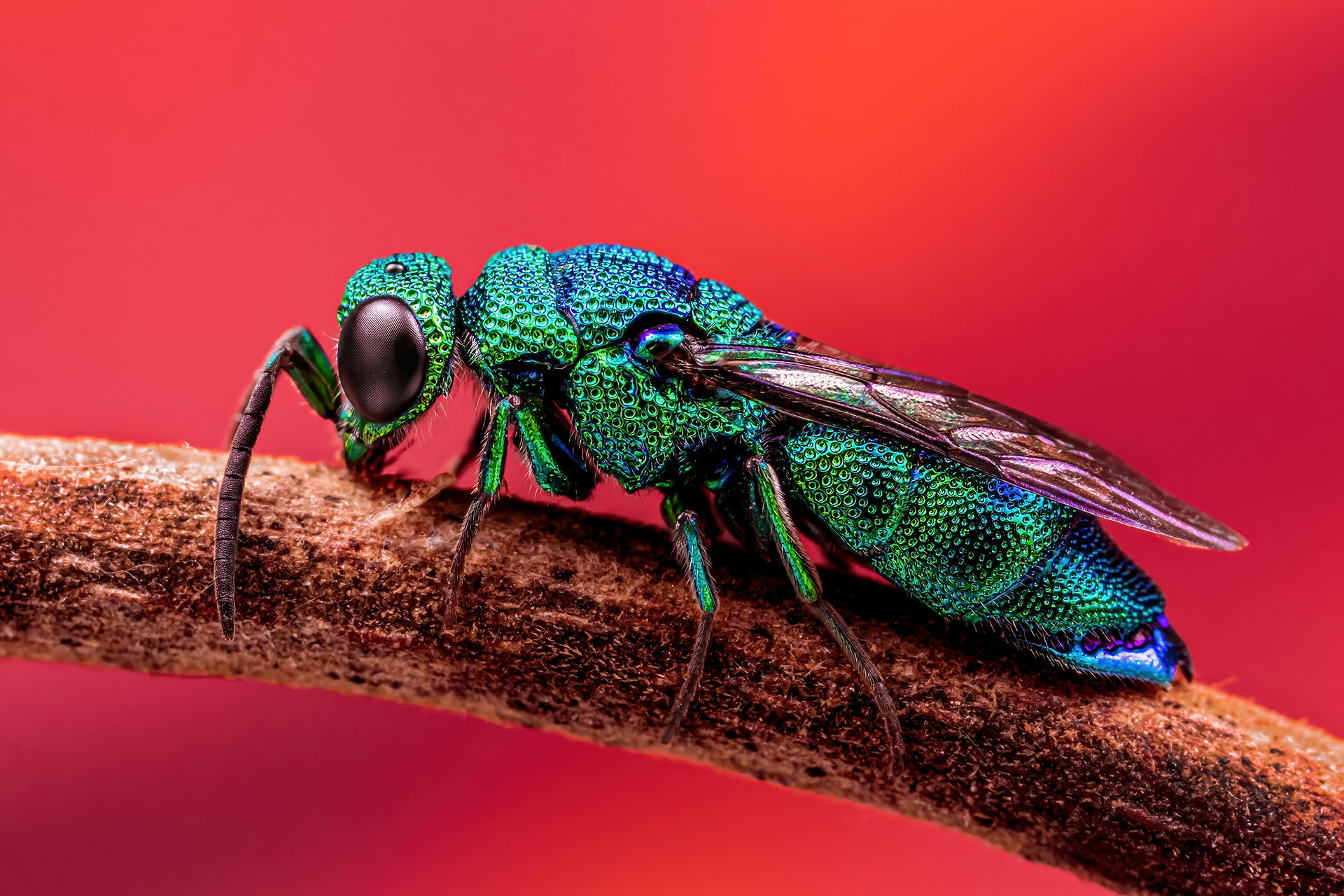Amphibian Emissary – Kevin Blackwell’s Visual Symphony for Conservation


Awarded in the official section of the final lineup at the "International Photography Awards", 20IPA.
The yellow-banded poison dart frog, scientifically known as Dendrobates leucomelas, is a dazzling and captivating amphibian native to the tropical rainforests of Venezuela, Brazil, and Colombia. Recognized for its vibrant and striking coloration, this species showcases a bright yellow head with black markings, contrasting with its black and yellow body and limbs. Measuring about 1 to 2 inches in length, these frogs are relatively small but pack a potent punch in terms of toxicity. The vibrant hues serve as a warning to potential predators about their highly toxic skin secretions, containing potent alkaloids that can cause serious harm or even death. Despite their toxicity, these frogs are a subject of fascination for scientists and enthusiasts alike, offering insights into the complex interplay between their bright colors and potent defenses in the intricate tapestry of their rainforest habitats.
Kevin Blackwell Portfolio
As a wildlife photographer, my journey into the world of animals has been nothing short of a captivating adventure. My love for showcasing the tiny marvels of animals through photography has become a mission to bring people closer to these fascinating creatures, allowing them to appreciate the intricate beauty that often goes unnoticed.
Based in Atlanta, Georgia, I am the staff photographer for the Amphibian Foundation. The organization’s mission is straightforward: to raise awareness about amphibians and their ecosystems. Dedicated to connecting individuals, communities, and organizations in order to create and implement lasting solutions to the global amphibian extinction crisis, it underlines the crucial role these creatures play in maintaining the delicate balance of our planet. My goal is more than just capturing images—I hope to showcase the beauty of these extraordinary beings, shedding light on their significance and revealing the challenges they face in our ever-changing environment.
In my role at the Amphibian Foundation, I’ve had the privilege of contributing to the organization’s efforts to raise awareness. Amphibians, often overlooked, are vital indicators of the health of ecosystems. I aim to highlight the unique characteristics of amphibians, bringing attention to their conservation needs and the ecosystems they inhabit.
I often shoot Macro photography, for its ability to reveal the details of animals. It allows people to see these creatures up close in a way they have never experienced before. It’s more than just showcasing their beauty, it’s about building a connection and understanding that goes beyond the surface. These are the details that are often missed but hold the key to a deeper appreciation for the diversity of life on our planet.
My work has been recognized on both local and international stages. The latest being the 2023 International Photography Awards. These acknowledgments, whether close to home or across the globe, motivate me to persist in my journey as a wildlife photographer, developing a deeper connection between the audience and the stories my photographs convey.
I hope to continue inspiring others to appreciate the beauty in the small and often overlooked aspects of the world. In doing so, we not only gain a profound understanding of the ecosystems we share with these creatures but also recognize our responsibility to protect and preserve the delicate balance that sustains life on Earth.
Explore Kevin Blackwell’s portfolio at kevinblackwellphoto.com.

Awarded in the official section of the final lineup at the "International Photography Awards", 20IPA.
The Slender Ant-mimic jumping spider belonging to the Peckhamia genus is a fascinating arachnid celebrated for its exceptional mimicry of ants. While specific species within the Peckhamia genus vary, they share a common theme of slender body structure and adept mimicry techniques. Typically found in regions across Asia and other parts of the world, these spiders have evolved to resemble ants in both appearance and behavior. With elongated legs and ant-like coloration, they seamlessly integrate into ant colonies, avoiding potential predators that would otherwise prey on spiders. The Peckhamia Ant-mimic jumping spiders showcase remarkable precision in their mimicry, imitating not just the physical features but also the distinct movements of ants. This adaptation serves not only as a means of avoiding predation but also as a strategic advantage for ambushing prey within ant colonies. The study of Peckhamia Ant-mimic jumping spiders unveils the intricacies of evolutionary strategies within the diverse world of arachnids.

Pumped to be recognized in 35Awards annual photography contest.
The Cuckoo wasp, belonging to the family Chrysididae, is a fascinating and visually striking insect found worldwide, known for its metallic iridescence and unique reproductive strategy. These wasps are typically small, measuring around .25-.5 inch in length, and come in a variety of vibrant colors, ranging from blue and green to red and gold. Cuckoo wasps earned their name due to their behavior of laying their eggs in the nests of other solitary wasps or bees, essentially parasitizing their hosts. The female Cuckoo wasp sneaks into the host’s nest, deposits its eggs alongside or instead of the host’s eggs, and then seals the nest. Upon hatching, the Cuckoo wasp larva consumes the provisions left by the host for its own offspring. While their reproductive strategy may seem parasitic, these wasps play a role in natural ecosystems and serve as intriguing examples of the diverse and sometimes complex strategies found in the insect world.

Lens of Learning - Photography as a Force for Conservation Education
The thumbnail poison dart frog, belonging to the genus Ranitomeya within the larger family Dendrobatidae, is a captivating and diverse group of frogs found in Central and South America, particularly in the Amazon rainforest. Renowned for their striking and varied color patterns, these small frogs typically measure between .5-1 inch in length. Unlike some other poison dart frogs, Ranitomeya species exhibit a wide range of colors, including vibrant reds, blues, greens, and yellows, making them a favorite among amphibian enthusiasts. The bright coloration serves as a visual cue to potential predators, warning them of the frog’s potent skin toxins, primarily alkaloids derived from their diet of ants and mites. Ranitomeya poison dart frogs are known for their intricate parental care, with some species depositing their eggs in plant materials or carrying tadpoles on their backs, contributing to the complexity of their fascinating natural history.


